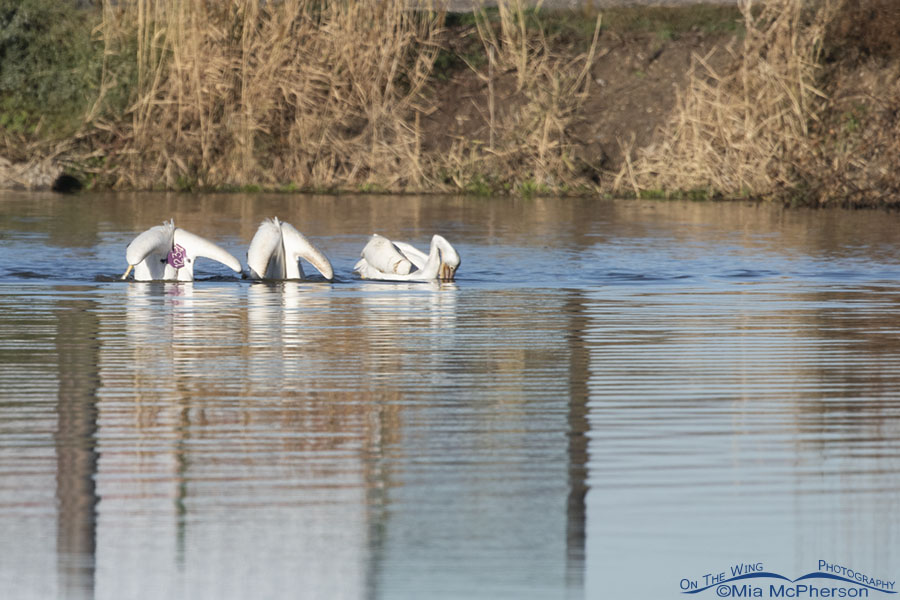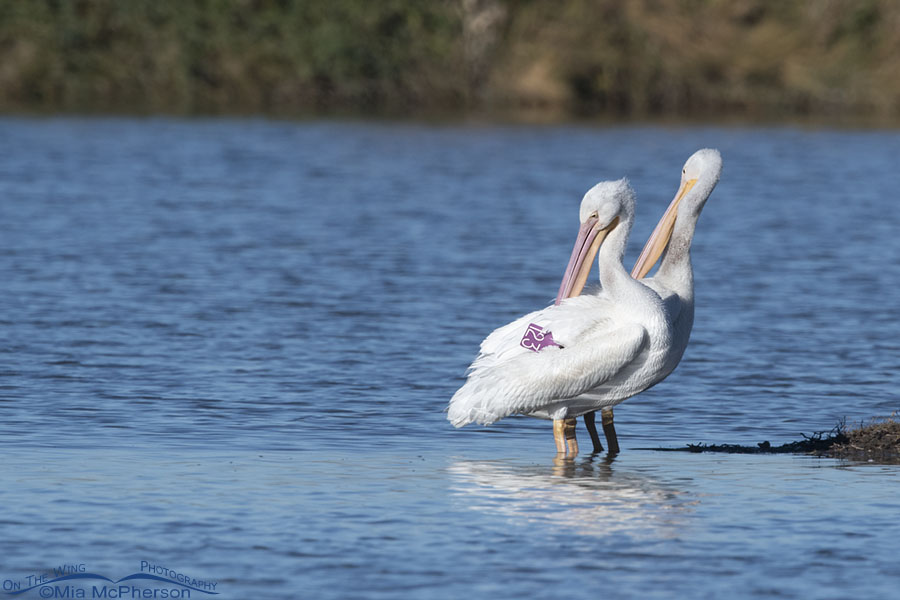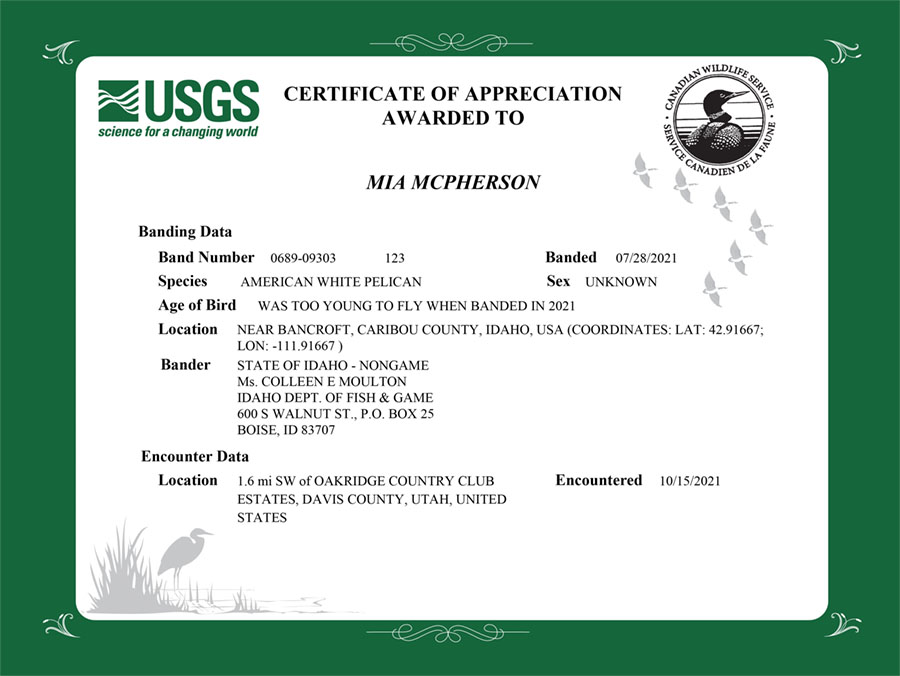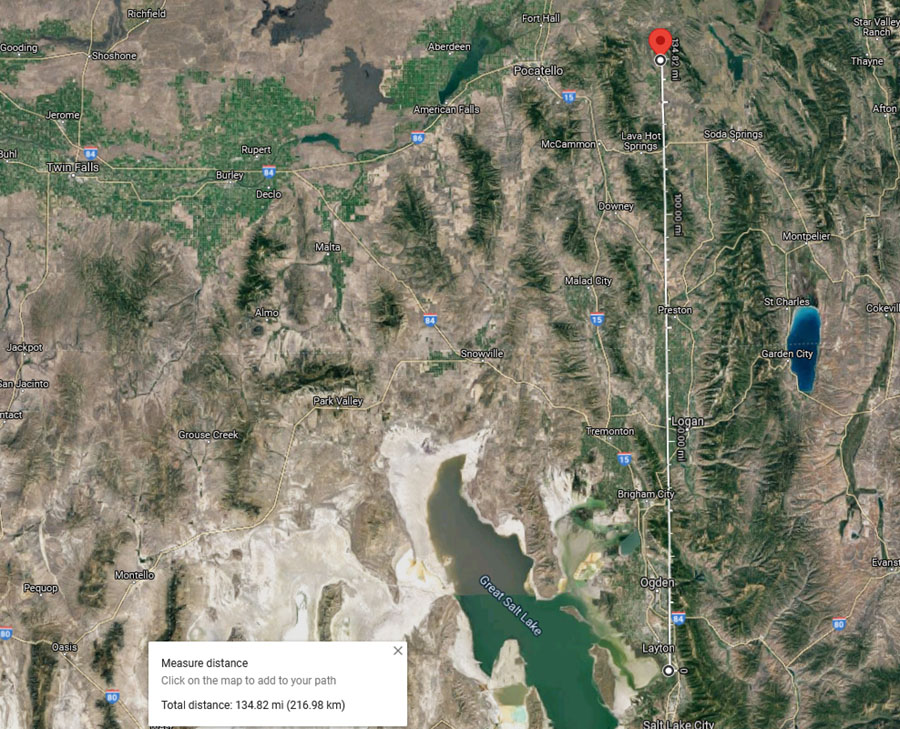 American White Pelican with purple wing tags #123 – October 15, 2021
American White Pelican with purple wing tags #123 – October 15, 2021
Last month I spotted a wing tagged American White Pelican on October 15th and saw it again on October 29th at Glover Pond and reported my sightings. On the 15th of October the American White Pelican with purple wing tags 123 was actively foraging with two other pelicans when I photographed it from a long distance. It was the first time I had seen a pelican with tags on both wings.
After I got home I reported my sighting to reportband.gov and I also emailed John Neill at johnneill@utah.gov to let him know about my sighting. Originally I had reported the wing tags as “hot pink” but John was kind enough to let me know that they were actually purple tags. I emailed the Bird Banding Lab Staff and let them know that the tags were purple and not hot pink so they could make the correction on my sighting report.
 American White Pelican with purple wing tag #123 – October 29, 2021
American White Pelican with purple wing tag #123 – October 29, 2021
On October 29th I found the American White Pelican with purple wing tags 123 preening at Glover Pond for the second time. I was able to take better photos of the pelican that morning because it wasn’t as far away as it was the first time I spotted it.
I had nearly forgotten about my wing tagged pelican sightings when I received an email telling me that I should expect to hear more about the pelican soon.
 Certificate of Appreciation – American White Pelican with purple wing tags 123
Certificate of Appreciation – American White Pelican with purple wing tags 123
Within a few hours I received this Certificate of Appreciation for my sighting report. When I checked the GPS coordinates I found that the banding location coordinates on the certificate were a bit off and the listed location was in the mountains of Idaho not near a body of water. I emailed Ms. Moulton, the bander, and asked if the young pelican was banded at Chesterfield Reservoir or Twentyfour Mile Reservoir which were the only two larger bodies of water nearby. When I heard back from Ms. Moulton I learned that the tagged pelican I found was banded at Chesterfield Reservoir, Idaho when it was still too young to fly.
 American White Pelican with purple wing tag 123 – Map showing distance from tagging to my sighting
American White Pelican with purple wing tag 123 – Map showing distance from tagging to my sighting
This map shows a red marker where the pelican was banded on the 28th of July and a small white circle where I found it here in Utah. The young pelican had flown about 134 miles almost due south from its banding location when I sighted it in October.
I have been reporting banded birds of various species since 2005 and have reported more than a hundred birds of various species to date. Data from reported sightings help researchers understand the migration patterns, breeding behavior, and survival rates of the banded birds. The banded birds can have wing tags, leg flags, colored leg bands, or neck collars. Some ducks will have nasal saddles or disks as auxiliary markers.
I haven’t seen an American White Pelican for a couple of weeks now. I hope that the one I found with the wings tags has a safe journey to its wintering grounds and that it will return to Utah or Idaho in the spring.
Life is good.
Mia
What is needed to report a banded bird:
- Date
- Location – Name of location or latitude and longitude (Google maps can help with that information)
- Tag, flag, leg band, or neck collar color and code
- Photos help!
Click here to see more of my American White Pelican photos plus facts and information about this species.


Very, very interesting post. The Pelican pics are wonderful, but I am really troubled by the aerial shot of the GSL. The entire west appears to be morphing into the Gobi desert. Congrats on your USGS Cert Mia and thanks for always being there for us.
Thank you.
That is wonderful for you and the bird. I would not have thought to mention I had seen a banded bird that was alive. I have only heard of people doing this if they found a dead animal. I also hope you will see him again in the spring. Most of the birds have already left my area for the season, and it surprises me that they are still moving south in other areas.
Such an interesting story about this individual. I really like the unusual position of the diving birds in the first shot. That’s a pelican image I don’t often get to see.
I really love this level of detail about an individual bird. It makes them come to life in a different way. Thanks for the reporting!